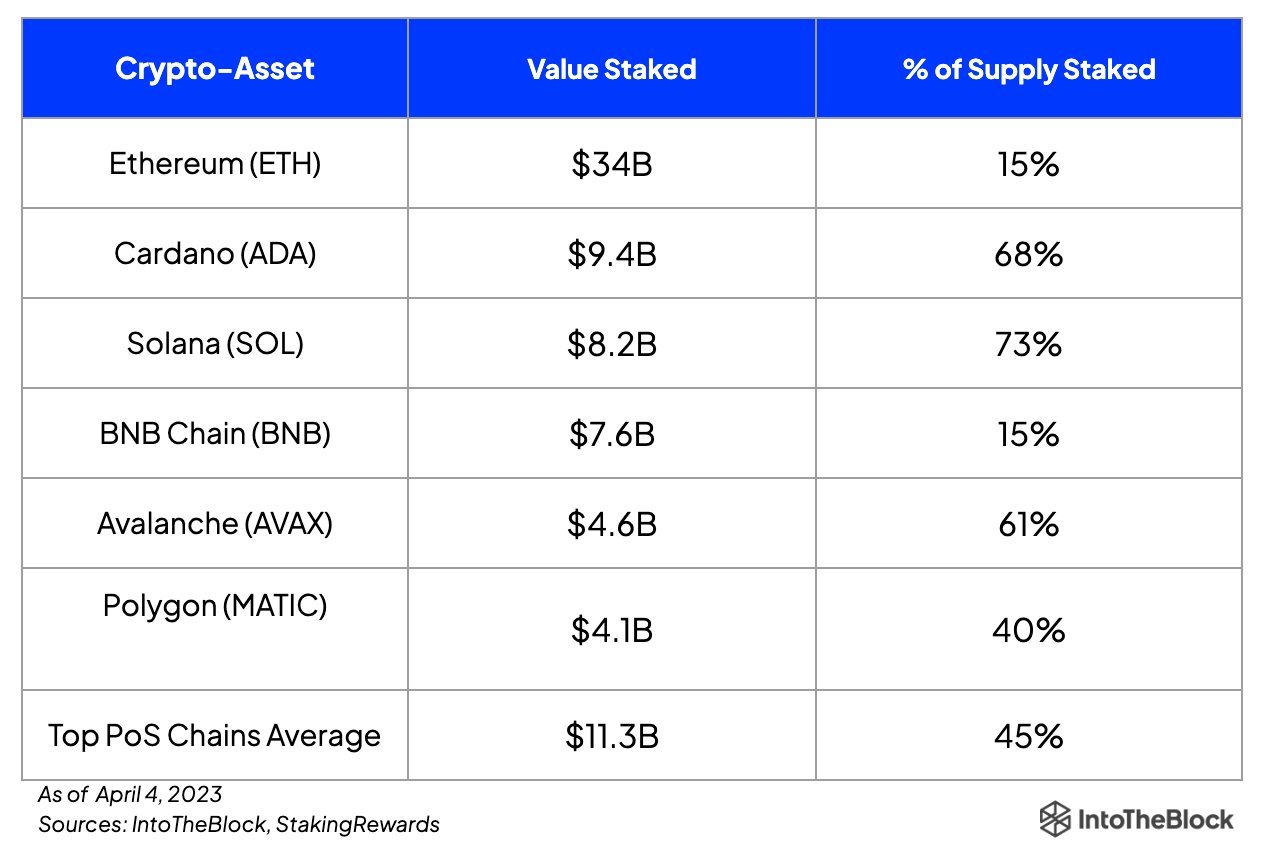Blockchain Analytics Firm ITB Predicts Surge in Staked $ETH After Shapella Upgrade

Ethereum’s Shapella upgrade is just around the corner, but what does it mean for Ethereum ($ETH) staking?
#Binance will support the Ethereum network’s Shapella (Shanghai + Capella) upgrade, set to take place approximately April 12, 22:27 UTC.
Deposits and withdrawals for $ETH and ERC-20 tokens will be temporarily suspended from around 22:20 UTC on April 12.
— Binance (@binance) March 29, 2023
The Shapella fork consists of two conjoined upgrades: Shanghai, which includes Ethereum Improvement Proposals (EIPs) related to the execution layer, and Capella, a major update to Ethereum’s consensus layer. The most notable EIP set to be implemented in Shapella is EIP-4895, which enables validators to start withdrawing their staked $ETH in two categories: partial withdrawals (staking rewards only) and full withdrawals (initial deposits and profits).
On Tuesday (April 11), blockchain analytics firm IntoTheBlock (ITB) shared insights on Twitter about the potential impact of the upcoming Shapella upgrade on Ethereum staking. As the upgrade approaches, many are curious if the percentage of $ETH being staked will rise over the mid to long term. ITB suggests that while the network might initially experience a drop in staking due to withdrawals, the evolving network dynamics could ultimately boost the percentage of the supply staked.
According to ITB’s tweet, when comparing Ethereum to other Proof-of-Stake (PoS) chains, the top PoS chains average 45% of their native token supply staked. Binance Coin ($BNB) is the only other chain with less than one-third of its supply staked, likely because holding $BNB offers users a 25% discount on trading fees – a utility not found on other PoS networks.

Source: Twitter
Given these factors, ITB believes it is highly likely that the amount of $ETH staked will increase in the weeks following the Shapella fork. Retail holders who may have hesitated about staking their assets indefinitely might start to gradually stake more. Moreover, institutional investors who couldn’t previously lock their limited partners’ capital into staking will now have the opportunity to earn a yield on their $ETH, reducing prior risks.
ITB predicts that this increase in staking could reach as high as 25%-30% within a year, bolstering the Ethereum network’s security and decreasing the available $ETH supply to be sold.
On April 6, Lucas Outumuro, Head of Research at crypto analytics startup at ITB, published a blog post titled “Estimating the Impact of Ethereum’s Shapella Upgrade,” in which he analyzed the short to medium-term effects of the upcoming $ETH unlocks. In his post, Outumuro broke down the dynamics of the Shapella fork, the likely outcomes for different industry players, and its implications for the Ethereum network and its native asset.
Outumuro explained that the Shapella fork, set for April 12, 2023, marks the culmination of Ethereum’s transition to proof of stake (PoS), with validators able to begin the process of withdrawing over $34 billion in staked funds. He acknowledged the uncertainty and lack of understanding surrounding these withdrawals and aimed to shed light on the process.
Outumuro delved into the key actors in the staking industry and how the Shapella fork affects them. Liquid Staking Derivatives (LSDs), which currently make up over 35% of all ETH staked, are expected to see net inflows after Shapella due to their liquid nature and lack of exit queues. Unidentified validators, a heterogeneous group, will likely withdraw some ETH but not necessarily sell it, as many may be long-term ETH believers.
He went on to say that American centralized exchanges (CEXs) like Coinbase and Kraken, which hold nearly 20% market share of ETH staked, are likely to experience the largest withdrawals following the Shapella fork due to government intervention. Some of their users may sell their assets, while others may withdraw the $ETH and hold it or move it into LSDs.
As for staking services, which manage validators on behalf of clients, he expects them to conduct partial withdrawals to cover their operating costs but believes that full withdrawals are less likely. International crypto exchanges could see net inflows and some selling.






 Bitcoin
Bitcoin  Ethereum
Ethereum  Tether
Tether  USDC
USDC  TRON
TRON  Dogecoin
Dogecoin  Cardano
Cardano  Bitcoin Cash
Bitcoin Cash  Chainlink
Chainlink  LEO Token
LEO Token  Stellar
Stellar  Monero
Monero  Zcash
Zcash  Litecoin
Litecoin  Hedera
Hedera  Dai
Dai  Cronos
Cronos  OKB
OKB  Tether Gold
Tether Gold  Ethereum Classic
Ethereum Classic  KuCoin
KuCoin  Gate
Gate  Algorand
Algorand  Cosmos Hub
Cosmos Hub  VeChain
VeChain  Dash
Dash  Tezos
Tezos  Stacks
Stacks  TrueUSD
TrueUSD  IOTA
IOTA  Basic Attention
Basic Attention  Decred
Decred  Theta Network
Theta Network  NEO
NEO  Synthetix
Synthetix  Qtum
Qtum  Ravencoin
Ravencoin  0x Protocol
0x Protocol  DigiByte
DigiByte  Zilliqa
Zilliqa  Nano
Nano  Siacoin
Siacoin  Numeraire
Numeraire  Waves
Waves  Ontology
Ontology  Enjin Coin
Enjin Coin  Status
Status  BUSD
BUSD  Hive
Hive  Pax Dollar
Pax Dollar  Lisk
Lisk  Steem
Steem  Huobi
Huobi  OMG Network
OMG Network  NEM
NEM  Augur
Augur  Bitcoin Gold
Bitcoin Gold  Bitcoin Diamond
Bitcoin Diamond  Ren
Ren